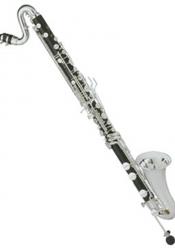Paris, France
It was here where Gilles Lot constructed the original "basse tube" in 1772, and Paris remained the city for this instrument's modifications over the next 20 years. Belgian inventor Adolphe Sax made improvements for the most current version of the bass clarinet as he was trying to patent his saxophone.
Parent Map
Coordinates
Latitude: 48.856614000000
Longitude: 2.352221900000
Longitude: 2.352221900000

